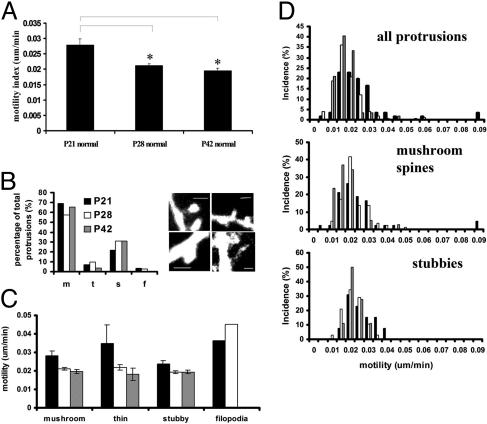Fig. 3.
Regulation of spine motility during the critical period in vivo. (A) Spine motility significantly declines during the critical period and remains at a basal level into early adulthood. *, P < 0.001. (B) The structure of dendritic spines in visual cortex does not change during the critical period. Mushroom spines were the most common type of protrusion at all ages studied. Filopodia were uncommon at these ages and were absent at P42. (Right) Examples of protrusions and classification; clockwise from top left, mushroom, thin, filopodia, and stubby. (Scale bars, 1 μm.) (C) The motility of all classes of spines is down-regulated during the critical period. (D) Distribution of motilities at the three ages studied. Mushroom spines were most common and comprised the least and most motile protrusions.

